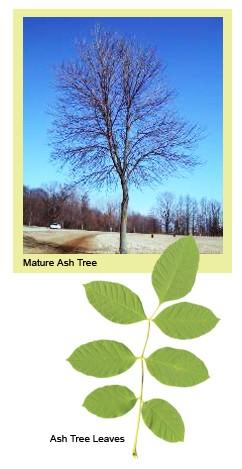Emerald Ash Borer (EAB), an exotic, destructive beetle, has claimed the lives of tens of millions of ash trees while making its way eastward in the United States. First discovered in Michigan in 2002, EAB has steadily closed in on Central Pennsylvania.

Now, property owners in York, Adams, Cumberland, and Lancaster counties have reason for concern. Heritage Lawn & Landscape Care and American Tree Experts discovered EAB in an ash tree within just six miles of York’s center-city square in early 2015. While this isn’t the first sighting of EAB in York County (it was found in the Dillsburg area in 2014), it is the first time the destructive insect was found so close to urban communities.
To find EAB so close to our metropolitan areas is alarming. If not given preventive treatment, ash trees on home, business, city, and municipal landscapes will fall prey to EAB and die.
Not only would that destroy the curb appeal that the beauty of ash trees provides, it would also have an economic impact. Property owners would face the significant expense of having trees removed and replacing them with new ones.
Why does EAB pose such an enormous threat to ash trees?
EAB infestation, if not prevented or caught early enough, means the death sentence for an ash tree.
Adult EAB beetles feed on the leaves at the tops of ash trees and then deposit their eggs into the crevices of the bark. After the eggs hatch, the larvae (the borer) chew their way into the inner bark and phloem of the tree. As they feed, they bore S-shaped tunnels (galleries) throughout the interior of the tree, disrupting the flow of water the tree needs to transport nutrients. Almost always undetected until it’s too late, the damage done by EAB kills the tree.
What are the signs of EAB?
EAB can be tough to spot because the insect initially affects the top of the tree canopy and then works its way downward. Within two years of the first symptoms of infestation, one-third to one-half of the branches will die.
Although difficult to see, the beetles (those that have transformed from larvae into adult beetles) leave a D-shaped exit hole—roughly 1/8 inch in diameter—in the bark of the trunk when they emerge in June. They then move on to destroy another ash tree.
Here’s what you should be on the lookout for on your ash trees:
- Dieback at the top of the tree
- Abnormal amount of woodpecker holes (They love to feed on EAB larvae.)
- D-shaped exit holes (as described above)
- S-shaped galleries under the bark of the trunk
What can you do to protect your ash trees?

Call us! Heritage is offering free evaluations for homeowners, commercial property owners, and municipalities to identify ash trees in danger of contracting EAB.
We offer effective, safe, and affordable treatments that can protect your property’s valued ash trees.
Our preventive treatments, which are applied directly at the tree so they don’t spread to the surrounding environment, are effective for one or two years. Ash trees with very early-stage infestation have a chance of survival if caught in time, so if you see any signs of EAB, contact us right away.
With nine certified arborists on our staff, we specialize in preventing, identifying, and treating Emerald Ash Borer and other tree problems. We’re committed to putting our expertise and energy to work to fight this devastating pest and save our native ash trees.
With EAB so close to home, now is the time to take action. Contact us to ensure your ash trees get the protection and care they need.

